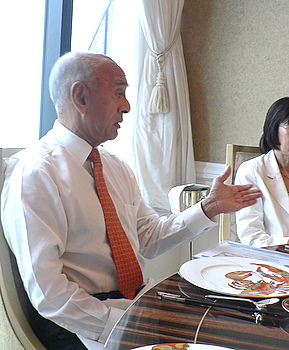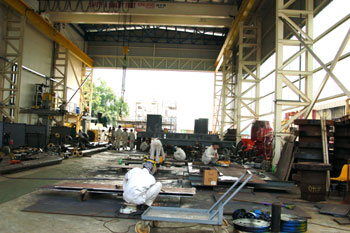MTQ Corporation is increasingly recognized as an interesting value stock by some investors. One of them is Musicwhiz, who has posted a lengthy analysis in his blog. We reproduce excerpts of that, in particular his analysis on the cashflow of MTQ.

AS EXPECTED, revenue dropped 12% year on year from S$45.3 million in 1H 2009 to S$39.8 million in 1H 2010. This was due to softer demand for the Company’s oilfield engineering services as many oil and gas projects were put on hold as a result of the financial crisis and subsequent recession.
Engine systems, however, remained relatively resilient and managed to slightly increase its revenue level (in AUD), but with a forex translation loss the net effect was a S$0.2 million decrease in revenue in SGD terms.
One fact I wish to mention is how much analysts have “hyped up” MTQ’s NAV of 82 cents as at Sep 30, 2009, and using this as a basis for recommending a BUY on the company due to the fact that it is trading below book value.
The truth is that this adjusted NAV (up from about 66.5 cents as at March 31, 2009) is a result of the increase in fair value of available-for-sale securities, as reflected under “Long-Term Assets” in the Balance Sheet.
Investment securities rose 140% from S$4.1 million as at March 31, 2009 to S$9.9 million as at Sep 30, 2009; mainly as a result of the across the board increase in market prices of quoted equities for most bourses around the world. Thus, the NAV is predicated on market values and should not be relied on without due consideration on the nature of composition of the NAV.
In my analysis of purchase of MTQ, I had highlighted the nature of their cash flows and how MTQ had consistently positive operating cash flows for the 5-years under my analysis (from FY 2005 to FY 2009). This has not changed with 1H FY 2010 registering a healthy positive operating cash flow of S$5.75 million.

Low capex, high free cash flow
What’s different this time though is that capital expenditure amounts to just S$990,000, which means there is Free Cash Flow (FCF) of about S$4.75 million for 6 months ended Sep 30, 2009. This was a contrast to my 5-year analysis showing just 1 year of FCF and 4 years of negative FCF due to the need for investment in fixed assets to keep up with the Oilfield Engineering Division.
However, one should also note for comparison sake that for last year, there was capital gains tax paid on disposal of RCR Tomlinson which pushed operating cash flows into the negative. Without this one-off tax, cash flows for 1H FY 2009 would have been positive.
Under investing cash flows, there was a net inflow of S$1.5 million due to the timely divestment of quoted shares, raking in S$2.5 million. If one compares the cash inflow of S$2.456 million from this sale against the gain on sale of S$1.863 million, it would be apparent that MTQ had made a gain of 314% over their cost of S$593K.
Thus, Management have once again demonstrated that are adept in timing the disposal of their investment in quoted equities, similar to the timing of disposal for RCR Tomlinson back in FY 2008. Note that there was also a minor purchase of quoted shares worth S$172K, against last period’s cash outflow of S$4.16 million from subscription of shares in Hai Leck’s IPO.
Financing activities was relatively muted and the main movements were for dividends paid out and small amounts of repayment and taking up of bank loans. Net cash outflow was reduced from S$3.8 million last year to just S$1.79 million due to the absence of share buyback for 1H FY 2010.
| MTQ (year-end March) | FY01 | FY02 | FY03 | FY04 | FY05 | FY06 | FY07 | FY08 | FY09 |
Interim dividend (cts) |
0 | 0 | 1.0 | 1.0 | 1.0 | 1.0 | 1.0 | 1.0 | 1.0 |
| Final dividend (cts) | 1.25 | 1.25 | 1.5 | 1.5 | 1.5 | 1.5 | 1.5 | 2.0 | 2.0 |
| Special dividend (cts) | 0 | 1.25 | 0 | 0 | 0 | 0 | 0 | 24.0 | 0 |
| Total | 1.25 | 2.5 | 2.5 | 2.5 | 2.5 | 2.5 | 2.5 | 27.0 | 3.0 |
It is worth noting that with the 1 cent per share interim dividend being declared, this represents a cash outflow of just S$880,600, which comprises just 3% of their total cash reserves of S$27.7 million.
Note that dividends are NOT paid on the treasury shares of 7.48 million, and this can be verified by glancing at the cash outflow of S$1.761 million for 1H 2010 – it was the payment of the final dividend of 2 cents per share on 88,059,117 shares (which excluded the treasury shares).
The Company is probably retaining the bulk of their cash for their Bahrain expansion, which they estimated would need US$20 million (about S$27.6 million using SGD 1.38 to the USD). This is already adequately covered by their current cash balance without them having to take on additional loans, and since their business is cash flow positive this cash balance will rise further throughout FY 2010 and part of FY 2011. I will discuss more on the Bahrain project in a later section.
Recent NextInsight story: MTQ CORP: Potential profit boost from Bosch deal





